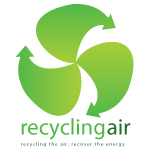Indoor air quality is a growing concern. According to the US Environmental Protection Agency, the air quality inside homes may be up to 70 times worse than that of outside air.
With the increased prevalence of allergies, asthma and other respiratory problems in North America, it’s important to make your home environment as healthy as possible, starting with the quality of the air you breathe.
This can be difficult to do, especially in today’s energy efficient homes. While energy efficient homes are great for keeping heat inside in the winter (and outside in the summer) the tightly constructed nature of the homes make it difficult for indoor air to escape.
As a result, allergens and other pollutants build up in your home, remain trapped inside, and are inhaled by you and your family members.
This can have a detrimental impact on your health, especially for those who suffer from allergies and asthma.
Poor Indoor Air Can Impact Your Health
- Chemical (including Radon) and biological contaminants, trapped in the home can cause respiratory irritation and allergic reactions
- Poor indoor air quality can make you feel drowsy and cause headaches
- Stale, moist air that is not circulated and expelled from the home enables condensation, which causes mold and mildew growth
- Poor indoor air quality can lower your immune system
- Prolonged mold and mildew exposure can be hazardous to your health – and can cause rot and structural damage to your home
- More sick days for kids
The Danger is Greater in New Homes
In new homes, indoor air quality can be especially poor. Building materials used in new home construction (like particle board, plastics, adhesives and carpets) all emit harmful vapours that can cause respiratory irritation.
Common Indoor Pollutants
See this list of chemical and biological contaminants found in most homes.
The Solution
Indoor air quality can be improved with proper ventilation, preferably with fine dust and pollen filter (HEPA – High Efficiency Particulate Air filter).
An optimal comfort (uniform and constant temperature and humidity) can be achieved by ventilation with energy recovery (ERV – Energy Recovery Ventilator) or a heat recovery (HRV – Heat Recovery Ventilator), coupled with a summer and winter conditioning (HVAC).









 KlimaHouse
KlimaHouse LifeBreath
LifeBreath Mitsubishi electric
Mitsubishi electric sanuvox
sanuvox Amatrice – Club Alpino Italiano
Amatrice – Club Alpino Italiano Amatrice – Comune
Amatrice – Comune Amatrice – Parco Nazionale
Amatrice – Parco Nazionale amatrice.net
amatrice.net amatriciana.org
amatriciana.org Excursions
Excursions News
News

Leave a Reply
You must be logged in to post a comment.